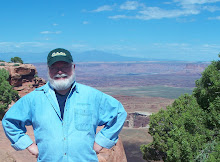George Washington was a proponent of building roads into the interior of the new country, to encourage commerce and to facilitate the travel of settlers; In Pennsylvania, there were early "log roads" or Pikes, the longest being 62 miles from Philadelphia to Lancaster. It wasn't until after the Civil war, however, that massive projects were undertaken.
In the 1880's William Vanderbilt and Andrew Carnegie began the construction of a private railroad bed from Harrisburg to Pittsburgh through the Allegheny Mountains, which posed an enormous barrier to railroad expansion. Before his project was abandoned, his company had built over half of the two-track roadbed and had started over seven tunnels. Twenty-six people lost their lives in the effort, known as "Vanderbilt's Folly."

In the early 20th century, automobiles and trucks were becoming the favored method of transportation. Yet it wasn't until the Great Depression that the Turnpike idea became a reality. With planning starting in 1935, ground was actually broken in 1938 and in 20 months, a 160 mile stretch of "Super Highway" was constructed, stretching from Harrisburg to Irwin, just North of Pittsburgh. Much of it followed the Vanderbilt route and completed the seven tunnels they had started or that were being used by contemporary railroad companies. The Turnpike was also known as "the tunnel road" because of these holes through the mountains rather than roads over them. The original seven tunnels were -- Laurel Hill, Allegheny, Ray's Hill, Sideling Hill, Tuscarora, Kittatinny and Blue Mountain -- and they were two lane tunnels; the twin tunnels would come later.

The original estimates of Turnpike usage were wildly underestimated. On a beautiful Sunday afternoon in October 1940, so many black sedans were on the Turnpike that they ran out of the dime tickets and resorted to handwritten paper tickets. The toll plazas were backed up for miles and the congestion did not ease up until 10:30 at night. The problem wasn't getting people on -- it was getting them off the Turnpike. 25,000 vehicles drove on the turnpike that day when they had projected 5,000. In the first year, the planners had calculated 1.3 million vehicles would use the Turnpike; actual usage was 2.4 million or 85% more vehicles than they had predicted.


Today, the original 160 miles has grown to 512 miles of Turnpike and yearly usage is now at 156 million vehicles. Yesterday, Joan and I were one of those traveler/statistics, glad to be home and happy not to have had to use the old Lincoln Highway -- Rt. 30 -- or the National Road -- Rt. 40-- but instead availed ourselves of the Pennsylvania Turnpike.







No comments:
Post a Comment